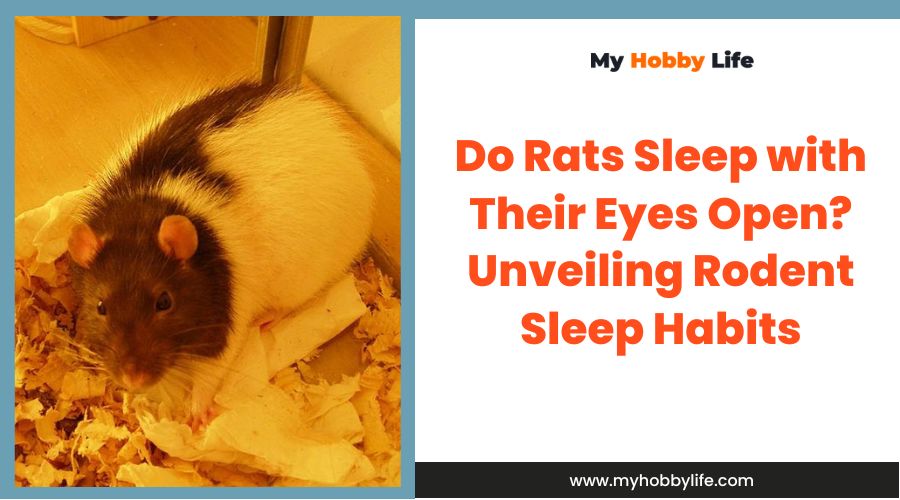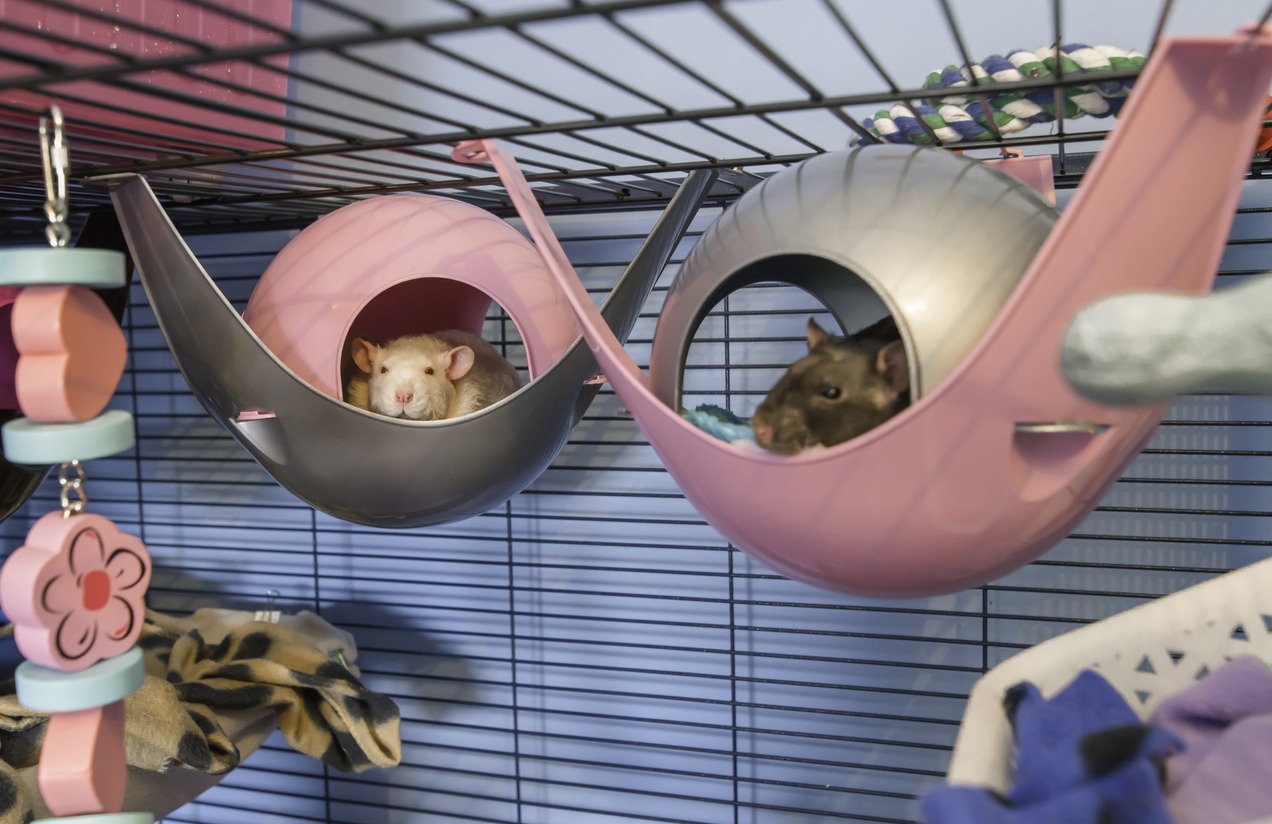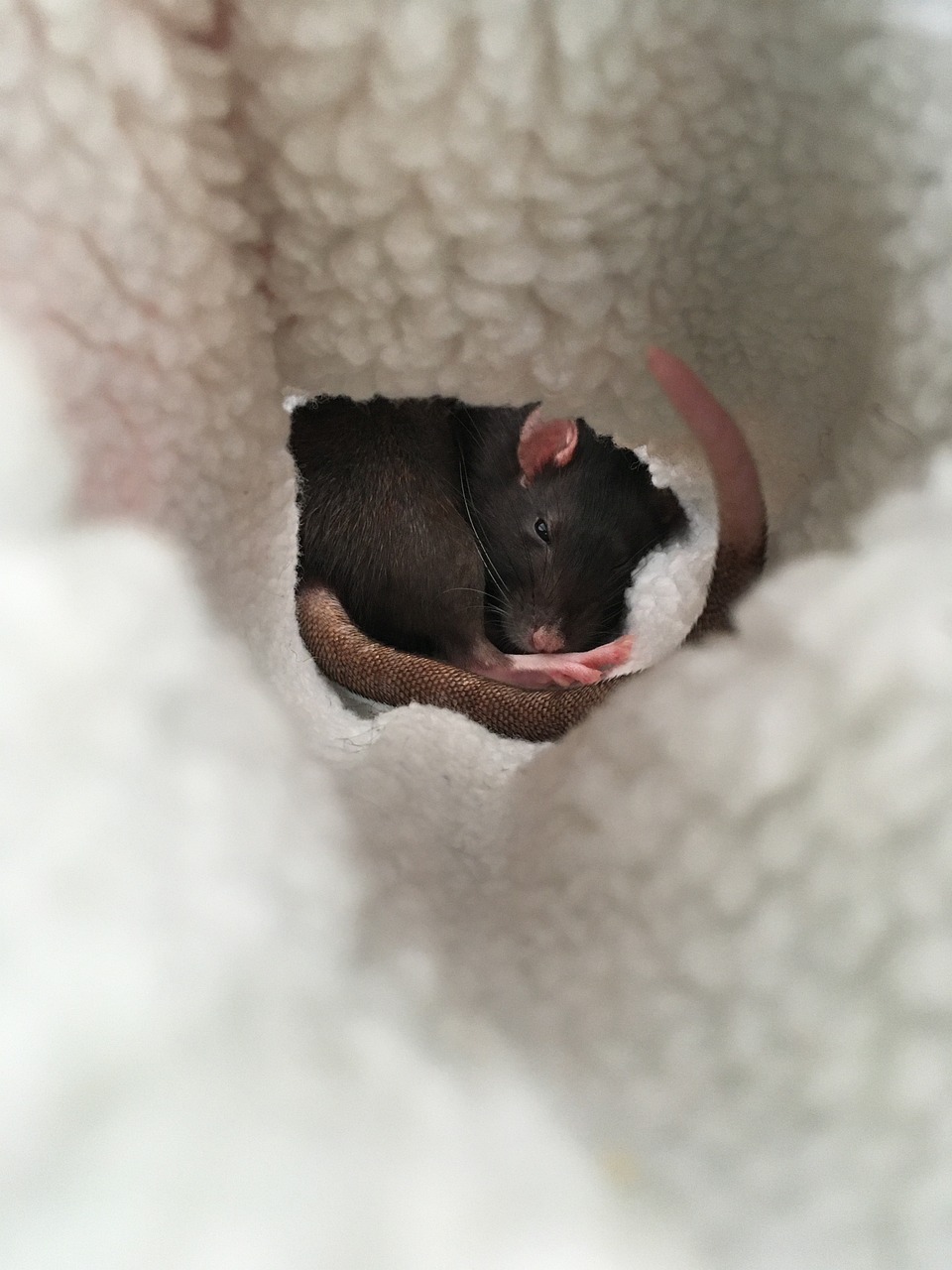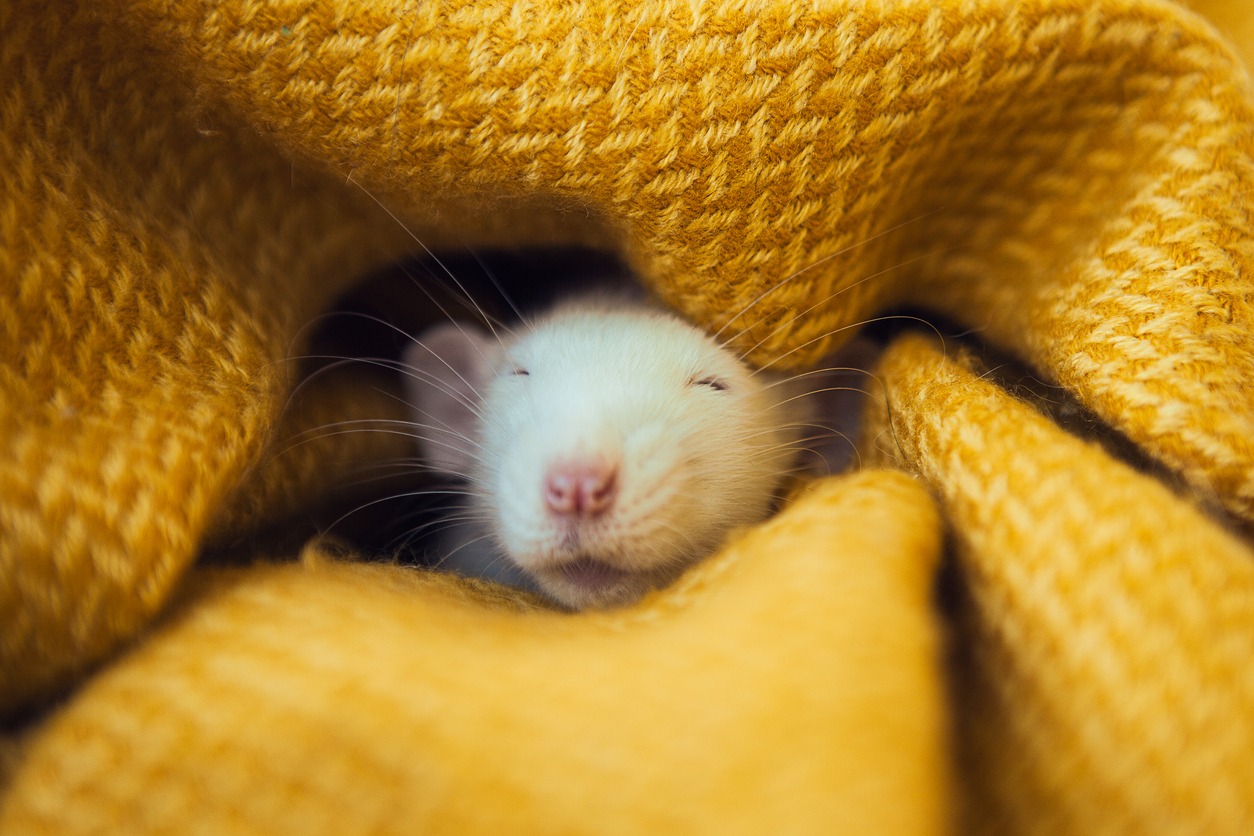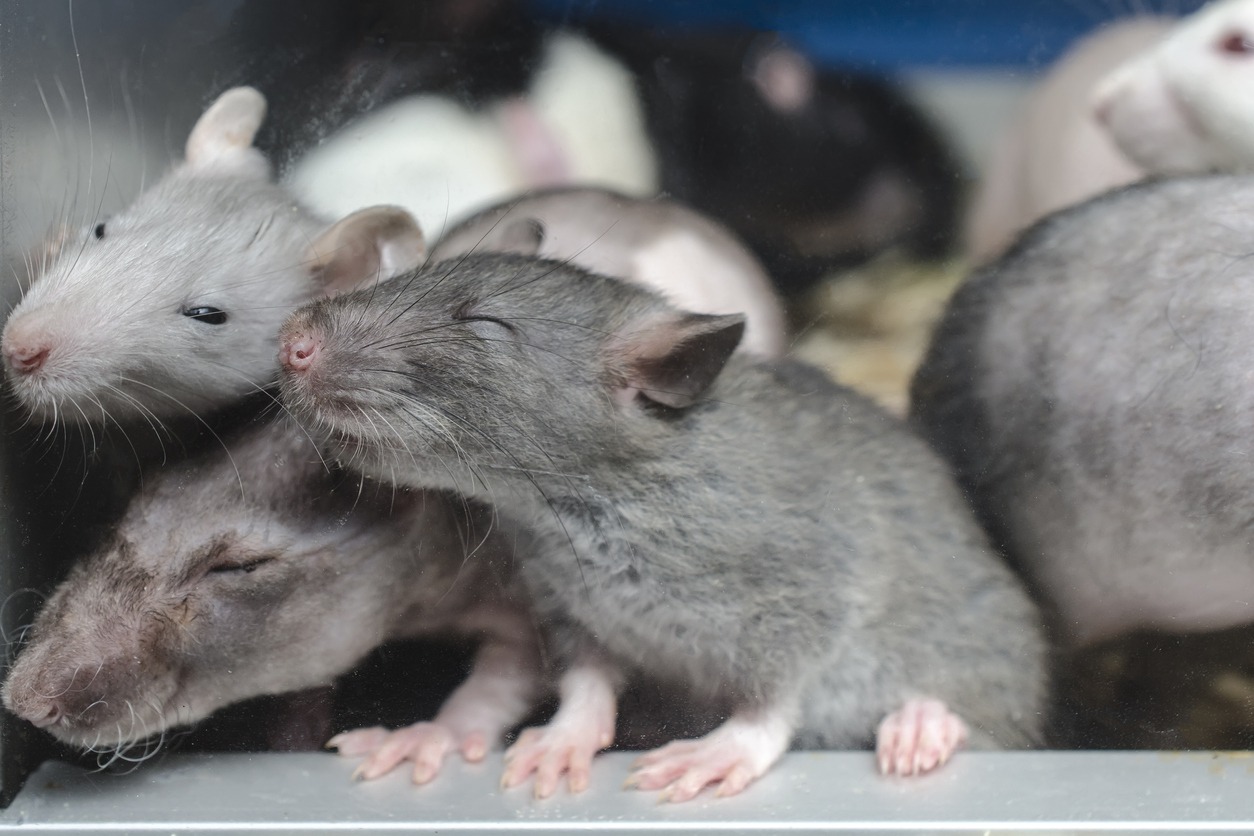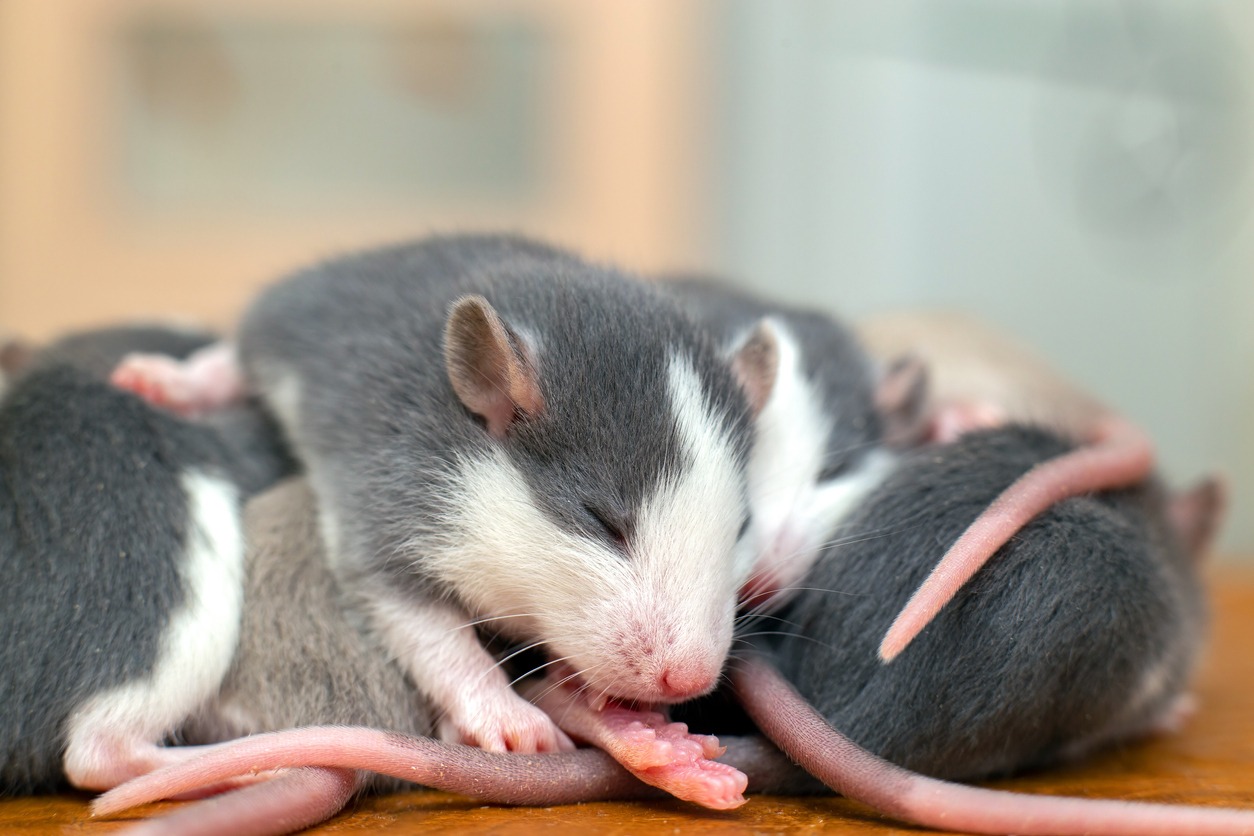Rats have fascinated researchers and pet owners alike with their complex behaviors and adaptability, and one of the intriguing aspects of their behavior is their sleep patterns. There is a common belief that rats can sleep with their eyes open, which raises questions and curiosity about the physiology and sleep habits of these rodents.
The truth is, rats indeed possess the ability to sleep with their eyes open due to a specialized feature known as the nictitating membrane. This transparent third eyelid allows rats to protect their eyes and maintain a level of awareness while they rest. Moreover, the sleep behavior of rats can vary based on environmental factors such as light exposure, suggesting that these animals have adroit coping mechanisms for different conditions.
Understanding rat sleeping habits provides valuable insights into their survival strategies and sensory capabilities. As nocturnal creatures, rats are most active during the night, but their sleep is not continuous; they typically take several short naps throughout the day or night. This pattern of rest, coupled with the capability to sleep with open eyes, illustrates the adaptability and vigilance that rats exhibit in their natural and adopted habitats.
Rat Sleep Basics
Rats exhibit unique sleeping behaviors and patterns that are both fascinating and complex. Exploring the intricacies of how rats sleep—including the sleep stages and the physical aspects of their sleep—provides insight into their nocturnal lifestyle.
Understanding Sleep in Rats
Rats are primarily nocturnal creatures, most active during the night. In terms of sleep patterns, they do not adhere to the human concept of a consolidated sleep cycle; rather, rats take multiple naps throughout a 24-hour period. These naps can vary in duration and intensity. The presence of a nictitating membrane—a protective third eyelid—enables rats to maintain a level of eye protection while resting. This membrane is translucent and can give the impression that the rat’s eyes are open when it is actually sleeping.
Stages of Sleep in Rats
The sleep cycle in rats is composed of two main stages: REM (Rapid Eye Movement) sleep and deep sleep—also known as slow-wave sleep. During the REM stage, the rat exhibits rapid, irregular movements of the eyes, a phase often associated with dreaming and high brain activity. While in this stage, they may close their eyes completely. Conversely, during deep sleep, rats tend to have their eyes open or partially open due to the protective nictitating membrane. Observation of these stages of sleep in rats provides researchers with valuable insights into their behavior and neurological functions.
Physical Characteristics Affecting Sleep
Rat sleep behaviors are influenced by unique physical traits, particularly regarding their eyes. Two key factors that affect how rats sleep are their eyesight capabilities and the presence of a specific protective membrane.
Eyesight and Eye Movement During Sleep
Rats possess relatively poor eyesight, relying more on their whiskers and sense of smell for navigation. When it comes to sleep, their eyesight doesn’t play a significant role in their sleeping patterns. However, they do often sleep with their eyes open, especially in darker environments. Conversely, when in well-lit areas, rats are more likely to sleep with their eyes closed. Their sleeping positions may also vary with light, often curling up with closed eyes in the light and stretching out with open eyes in the dark.
The Role of the Nictitating Membrane
The nictitating membrane, or third eyelid, is a translucent protective layer that covers a rat’s eyes during sleep, allowing them to keep their eyes open. This membrane helps protect and moisten the eye while still enabling the rat to be somewhat aware of its surroundings. This adaptation is particularly important for prey animals like rats, as it can provide a level of security during the vulnerable state of sleep. Even when a rat seems to be sleeping with their eyes closed, the nictitating membrane can be in place, acting as a barrier while they dream and cycle through different sleep stages.
Behavioral Patterns
Rat sleep behaviors are multifaceted, influenced by their nocturnal nature and social dynamics. These behaviors also adapt as a response to environmental pressures such as predation.
Nocturnal Behavior and Predation
Rats are fundamentally nocturnal animals, most active during the nighttime hours. Their sleep-wake cycle is primarily adapted to avoid daytime predators and to forage during hours of relative safety. As a result, pet rats typically demonstrate a pattern of sleeping during the day. This behavioral adaptation minimizes exposure to predators that are less active at night.
Social Aspects of Rat Sleep
As social animals, rats often sleep in close proximity to one another, which can influence how they sleep. Interaction between rats during restful periods can denote social hierarchies or even reduce boredom. They tend to interact less during their sleep cycle, but social dynamics are maintained through other behavioral patterns seen when they are awake.
Rat Sleeping Postures
Rat sleeping position can vary based on environmental factors. In well-lit conditions, rats often sleep with their bodies curled up and eyes closed, whereas in the dark, they may sleep more stretched out, often with their eyes open. This could be an adaptation to remain alert even during rest periods or a simple response to the feeling of safety in the absence of light.
Environmental Influences
Rat sleeping patterns can be significantly affected by their environment, particularly the levels of light and noise they are exposed to. Age and individual lifestyle factors also play a role, influencing both pet and wild rats. Here we explore how light and sound in a rat’s environment can impact their sleeping habits.
Impact of Light on Rat Sleep
Light plays a crucial role in determining the sleeping behavior of rats. They exhibit different tendencies based on the lighting conditions:
- In Bright Environments: Rats tend to sleep with their eyes closed.
- In Dark Environments: They may sleep with their eyes open, aided by a nictitating membrane that helps protect the eye.
This adaptation allows rats to remain alert to potential dangers even during rest periods. It’s worth noting that pet rats, which may be kept in environments with controlled lighting, might have altered sleeping schedules compared to their wild counterparts that adapt to natural light cycles.
Sleep Disruptions from Noise and Activity
Noise and everyday activities can interrupt the sleeping patterns of rats:
- Noise: Sudden or constant noise can startle rats and disrupt their sleep.
- Activity: A bustling environment can interfere with the polyphasic sleep cycle of rats, leading to reduced rest or fragmented sleep patterns.
Pet rats especially may experience variations in their sleep due to the typical household noises and activity they are exposed to. Maintaining a quiet and calm environment can help pet rats to adopt a more regular sleeping schedule and secure the rest they need.
Health and Wellbeing
In ensuring the health and wellbeing of pet rats, understanding their sleep behaviors is crucial. Quality of sleep has a profound impact on their overall physical and mental health.
Significance of Sleep for Rat Health
Sleep plays a vital role in a rat’s health, greatly influencing their immune function, stress levels, and cognitive abilities, including memory. Rats generally need ample sleep for optimal health and wellbeing. The owner must observe their rat’s sleeping habits to ensure they’re achieving sufficient rest. Rats experience various sleep stages, much like humans do, which all contribute to the restorative processes essential for their health.
Indicators of Sleep Deprivation
Owners can look out for several signs that indicate a rat may not be getting adequate sleep. Symptoms can include:
- Irritability or aggression: Changes in normal behavior may suggest a lack of rest.
- Decreased cognitive function: Issues with tasks they previously mastered might be noticeable.
- Altered sleeping habits: Excessive sleep during the night or too much activity during the day can hint at disturbances in their typical sleep patterns.
- Breathing irregularities: Stress from sleep loss can affect their breathing.
Monitoring these indicators is part of responsible pet ownership. Addressing any disruptions in sleep early can prevent compounding health issues.
Understanding Rat Behavior
Rats exhibit a range of behaviors that are often misunderstood by observers. This section clarifies the reality of rat sleep patterns and dispels common myths about these behaviors.
Common Misconceptions About Sleeping Rats
One widespread misconception is that rats sleep with their eyes open. While it is true that rats sometimes appear to have their eyes open while sleeping, this is typically due to the presence of a nictitating membrane—a third eyelid that can protect their eyes and is translucent. Consequently, pet rat owners might mistakenly think their rat is dead when it is merely sleeping with its eyes covered by this membrane. This is especially startling because a rat’s breathing can be very shallow when they are asleep, making it hard to observe.
In contrast, some sources incorrectly state that rats usually sleep with their eyes open. However, it is more accurate that they often do so in the dark. Improved eyesight is not necessary for wild rats in this situation because they are relying on their strong sense of hearing and smell to alert them to danger, typical for prey animals.
Interpreting Sleep-Related Rat Behaviors
Understanding rat behavior involves recognizing signs of a healthy sleep cycle. When a rat is in a deep sleep, it will most likely have its eyes closed. Domestically, it may differ as they are in a more protected environment compared to wild rats.
A rat’s sleep is also influenced by its evolutionary history as prey animals. Their poor eyesight relative to their other senses prompts them to depend on hearing and smell for survival, which remain active when they are in lighter stages of sleep, seemingly with their eyes open.
In conclusion, understanding and interpreting rat behaviors, particularly those associated with sleep, requires an awareness of their unique anatomical and physiological features.
Seasonal Changes and Sleep
Seasonal variations, particularly winter, can have significant impacts on the sleep patterns of rats due to the changes in daylight and temperature.
Effects of Winter on Rat Sleep
During winter, rats may experience alterations in their sleep behavior. Winter often brings shorter days and lower temperatures, which can influence a rat’s metabolism and daily rhythms. Their metabolism slows down in response to colder conditions as a means to conserve energy, which could also affect their breathing movements.
In the cold months, rats may seek out warm and insulated areas to maintain body heat. The need for warmth can lead to increased nesting behaviors and potentially longer periods of inactivity that resemble sleep. As a result, they may exhibit fewer breathing movements as their bodies enter a more restful state, conserving energy during the harsh winter conditions.
Practical Considerations for Rat Owners
For rat owners, understanding and facilitating the unique sleeping habits of pet rats is crucial. These nocturnal creatures require specific conditions to maintain healthy sleep patterns.
Creating an Ideal Sleeping Environment for Pet Rats
Lighting: Rat owners should be aware that the presence or absence of light affects how rats sleep. Generally, pet rats prefer dimly lit or dark environments for sleeping. It’s beneficial to mimic the natural light cycle, providing darkness at night which may encourage them to sleep more soundly with their eyes closed.
Noise: A quiet environment is important for a rat’s sleep quality. Sudden noises can startle them, disrupting their rest. Owners should strive to minimize noise levels, especially during the day when pet rats are most likely to sleep.
Nesting Materials: Rats naturally seek out soft materials to build nests. Owners should ensure their pets have access to safe nesting materials like:
- Shredded paper
- Cloth strips (free of loose threads)
- Commercially available nesting fibers
A comfortable nest helps pet rats feel secure and can facilitate deeper sleep, whether their eyes are open or closed.
Temperature and Humidity: The sleeping area should be kept at a comfortable temperature and humidity level. Extreme conditions can interfere with a rat’s sleep, so maintaining a stable environment is key.
Placement of the Cage: The cage should be placed in a part of the home where there is less foot traffic and away from direct sunlight. This can provide a calm atmosphere, allowing pet rats to rest without disturbance.
Advanced Topics in Rat Sleep
The study of rat sleep touches on complex neurobiological processes that interact with cognitive functions like memory. Deepening the understanding of these interactions involves exploring the intricacies of brain activity during different sleep stages in rats, particularly REM sleep.
Research Insights on Rat Sleep and Memory
Researchers have found significant correlations between rat sleep patterns, including REM sleep, and memory consolidation processes. During REM sleep, rats exhibit high brain activity levels that mirror those of waking hours. It’s during this stage that researchers believe memory enhancement likely occurs. Studies involving EEG have documented slow waves and other patterns associated with deep sleep stages in rats.
In experimental settings, disruptions in the rat’s sleep, especially during REM phases, have been linked with impaired memory retention. This suggests a critical period during which the rat’s experiences are solidified into long-term memory. Conversely, facilitating uninterrupted REM sleep after learning tasks can improve a rat’s ability to recall the task, pointing to an essential role of REM sleep in memory consolidation.
These insights not only contribute to the wider comprehension of mammalian sleep patterns but also provide a framework for how sleep architecture can influence cognitive functions such as learning and memory.
Conclusion
In the examination of rats’ sleeping habits, key observations indicate that some rats can sleep with their eyes open. The presence of a nictitating membrane, akin to a third eyelid, allows them to protect their eyes during rest. This feature is particularly advantageous in darkness, where they might keep their eyes open more frequently.
However, it is not a uniform behavior; environmental factors can influence whether a rat sleeps with its eyes open or closed. In well-lit conditions, rats commonly mimic humans and other animals by closing their eyes during sleep. Factors such as light intensity and safety may contribute to these habits, as open eyes could allow for a rapid response to potential threats, even while resting.
Differing sleep phases also play a role. REM sleep, often associated with more vivid dreaming states in many animals, might see rats with closed eyes. Non-REM sleep, conversely, might not require such closure.
In summary, while rats possess the ability to sleep with eyes open, several conditions can modify this behavior. Their translucent eyelids and the versatile nictitating membrane afford a level of adaptability in various settings. These physiological traits, coupled with environmental considerations, determine rats’ eye state during rest, showcasing their complex and often misunderstood sleep patterns.
Frequently Asked Questions
This section addresses some of the most common inquiries about the sleeping patterns and behaviors of rats. It serves to clarify misconceptions and provide factual information regarding how rats sleep.
How long do rats typically sleep?
Rats generally sleep around 12 to 15 hours per day. Unlike humans, their sleep is sporadic and occurs in short bursts during both day and night.
Can you see any physical signs when a rat is sleeping?
A rat may sleep with its eyes open due to a nictitating membrane that protects their eyes. This can sometimes give the appearance of being awake when they are actually asleep.
What are the sleeping habits of rats during the day and night?
Rats are nocturnal creatures, which means they are most active at night and tend to have quieter periods during the day. Despite this, they do not have a strict sleep schedule and will often take multiple short naps spread throughout the 24-hour period.
Do rats show different sleeping positions, and what do they indicate?
Rats can sleep in a variety of positions, from curled up to stretched out. Sleeping postures can indicate comfort and security, with some rats even sleeping on their backs when they feel particularly safe.
How can you tell if a rat is stressed from its sleep behavior?
Alterations in a rat’s regular sleep cycle, such as increased sleep duration or restlessness, can be indicative of stress or discomfort. Moreover, a stressed rat may choose to sleep in more concealed or protected areas.
At what times are rats most likely to sleep?
While rats can sleep at any time, they are more inclined to sleep during the day, given their nocturnal nature. They may adjust their sleeping patterns based on their environment and the presence of humans or other potential disturbances.
